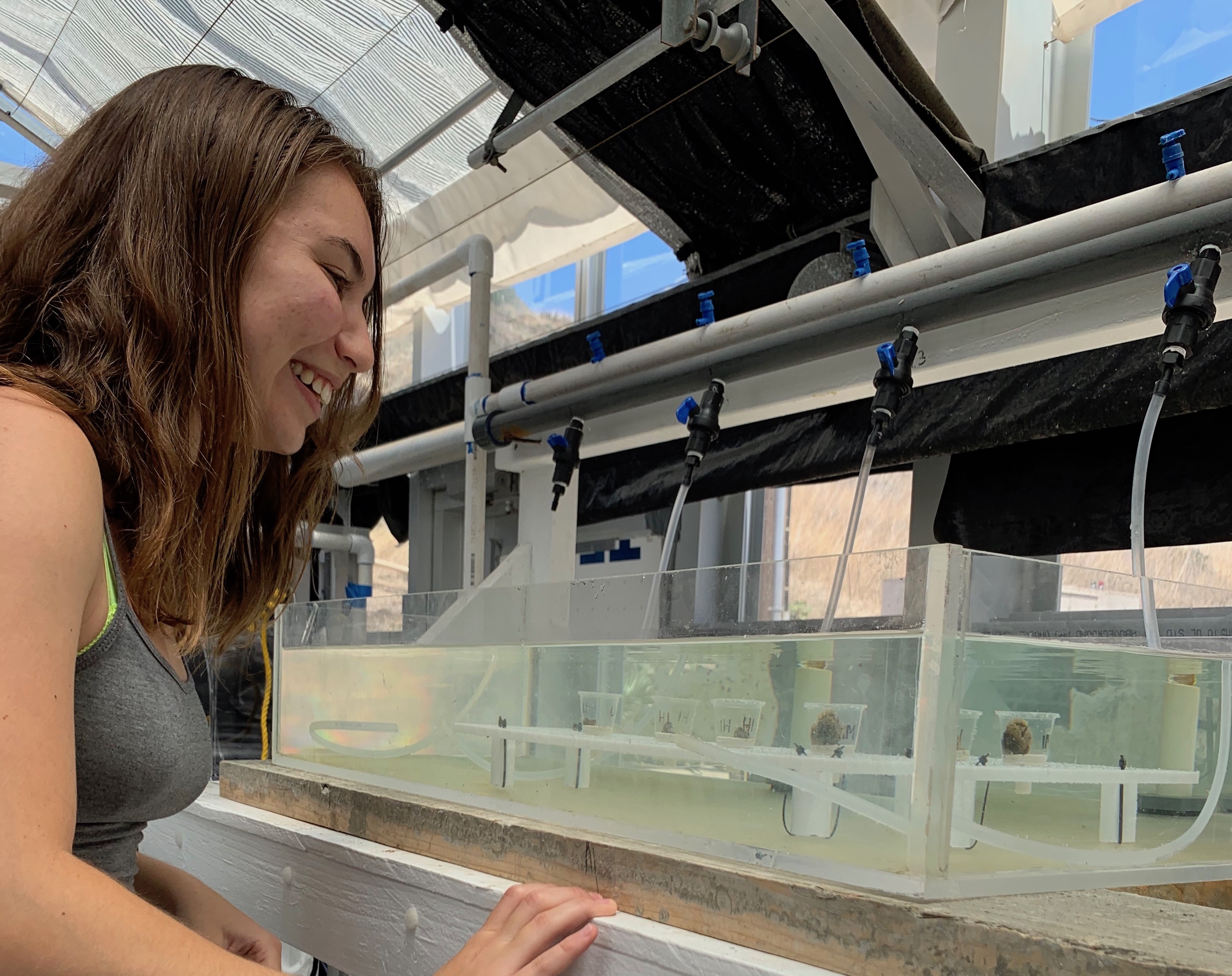By: Maria Ruggeri
Hi there! My name is Maria Ruggeri and I am a third year PhD student in marine and environmental biology at USC. This year, I received the Wrigley Bakus and Wrigley Summer Fellowships to study thermal tolerance of the aggregating anemone, Anthopleura elegantissima, on Catalina Island.
This sea anemone is interesting because it forms a symbiotic relationship with microscopic algae, similar to tropical corals which form coral reefs. The anemone provides a home for the algae and the symbiont provides food from photosynthesis in return. However, under stressful conditions, this partnership breaks down, resulting in a loss of algae or its photosynthetic pigments, in a process known as bleaching.

Photo of a healthy anemone with its symbionts (left) and a bleached anemone (right) after heat stress.
In corals, bleaching occurs at only 1/2 °C above the average temperature. In contrast, the aggregating anemone lives in the intertidal zone and can withstand temperature fluctuations of up to 20°C! The intertidal forms an environmental gradient where anemones in the high zone are frequently exposed to high temperatures during low tides, whereas those in the low zone stay submerged at a lower, more constant temperature. This provides a natural laboratory to study the genetic and environmental effects that may lead to increased thermal tolerance.
Additionally, these anemones form large aggregations of many individuals. Although there are lots of anemones within a single aggregation, they are all genetically identical, or, in other words, clones! This gives me the unique opportunity to compare variation in thermal tolerance between genetically distinct aggregations as well as within a clonal aggregation. Previous studies have found that anemones on the outside of aggregations have higher body temperatures during low tide exposure versus those on the inside, which are more buffered from the environment. In addition to comparing anemones between the high and low intertidal, I will also be quantifying thermal tolerance between clones to test whether thermal history may lead to increased tolerance.

Large aggregation of anemones from one of my sampling sites. There can be over 100 anemones in an aggregation!
I recently collected anemones from the inside and outside of multiple aggregations across the intertidal and exposed them to a temperature challenge. My typical day consisted of making sure tanks were clean, at the correct salinity, and temperature. I was also able to take fluorometer measurements using a diving-PAM which can indicate damage to the algal symbiont under stress. After one week, I sampled these anemones and will be taking them back to the lab to perform algal cell counts and chlorophyll analysis as an indicator of bleaching in addition to extracting both DNA and RNA! I am excited to start my lab work, but definitely going to miss this view!!


